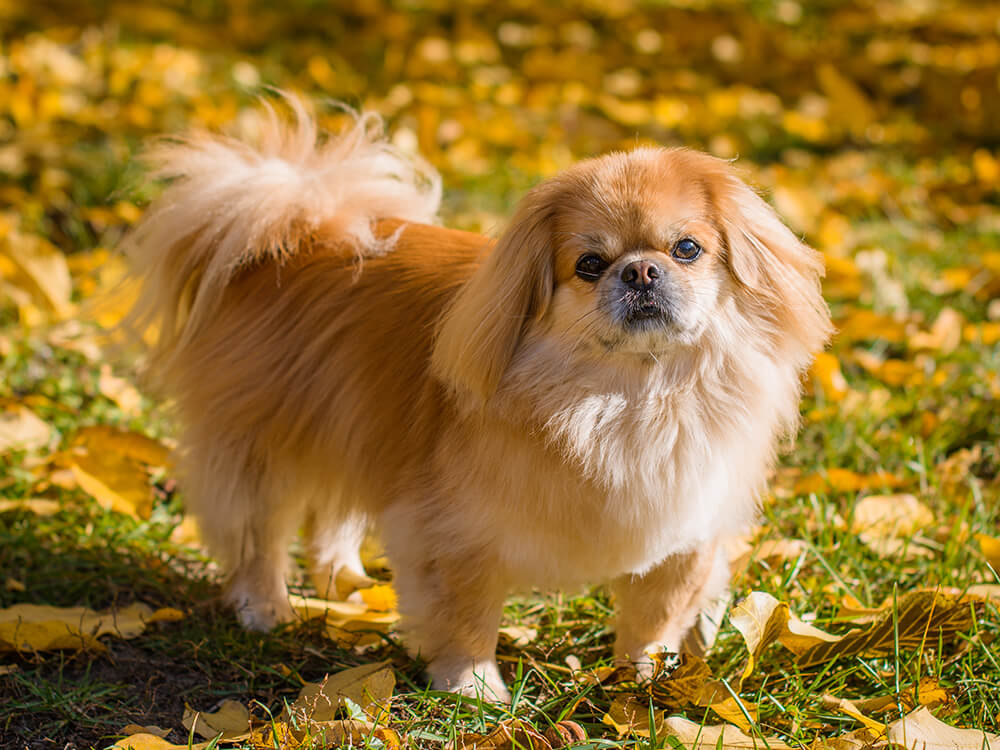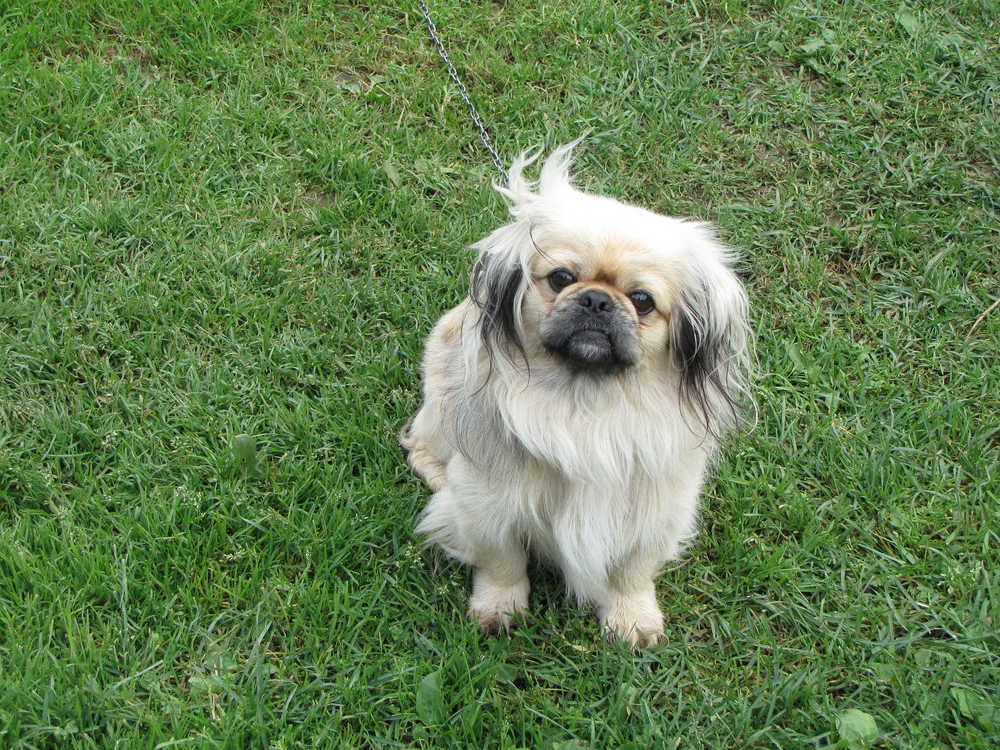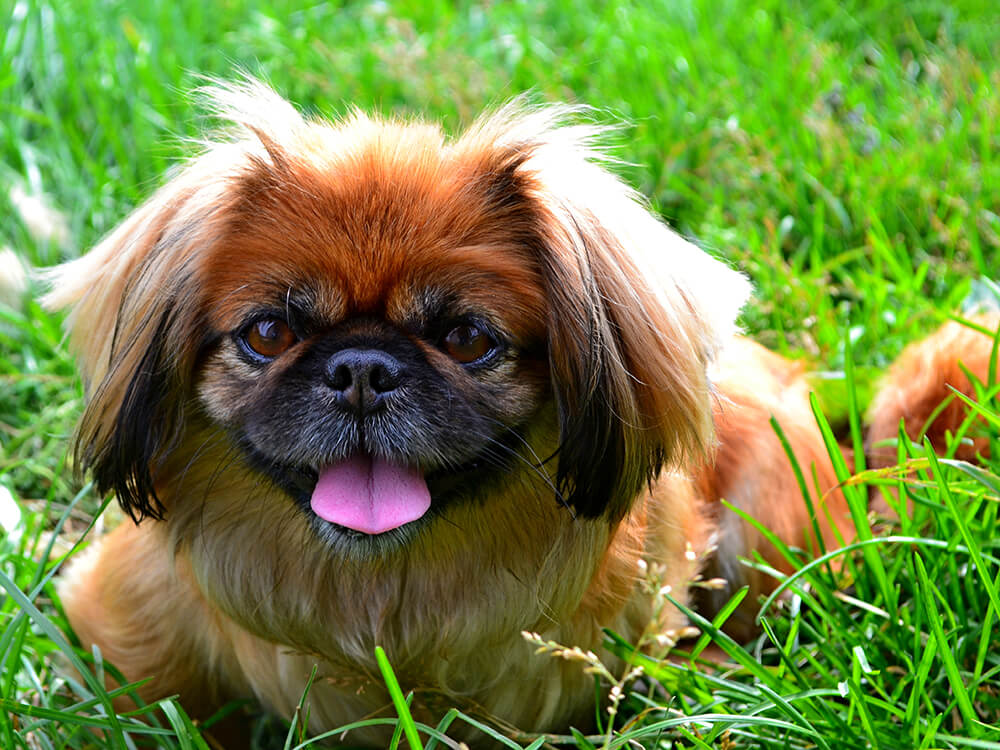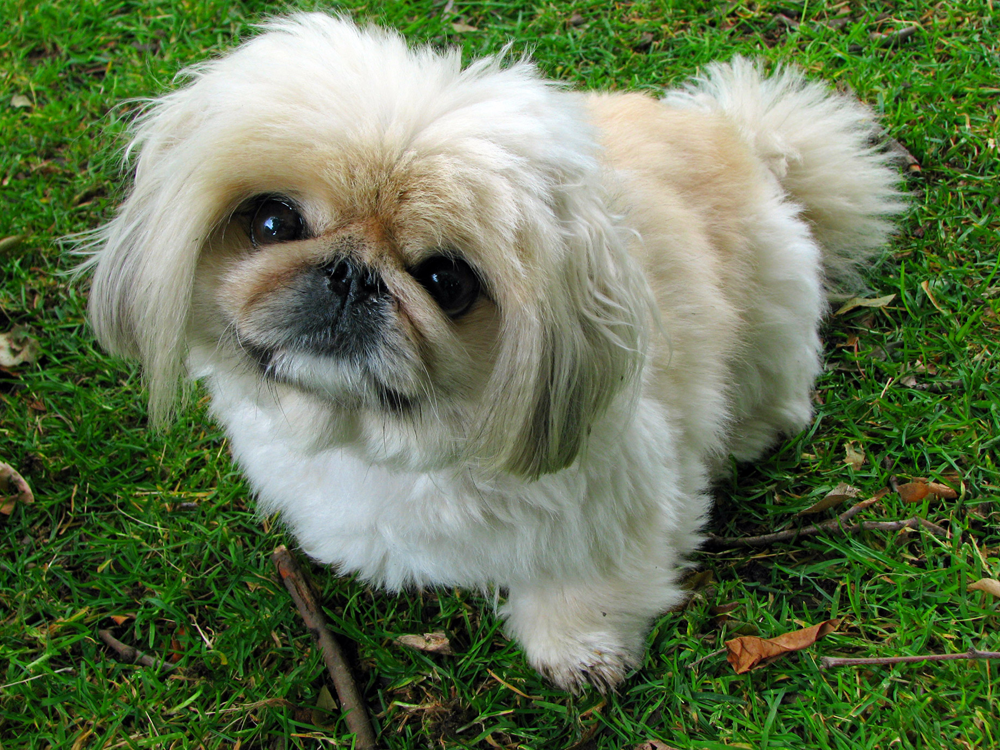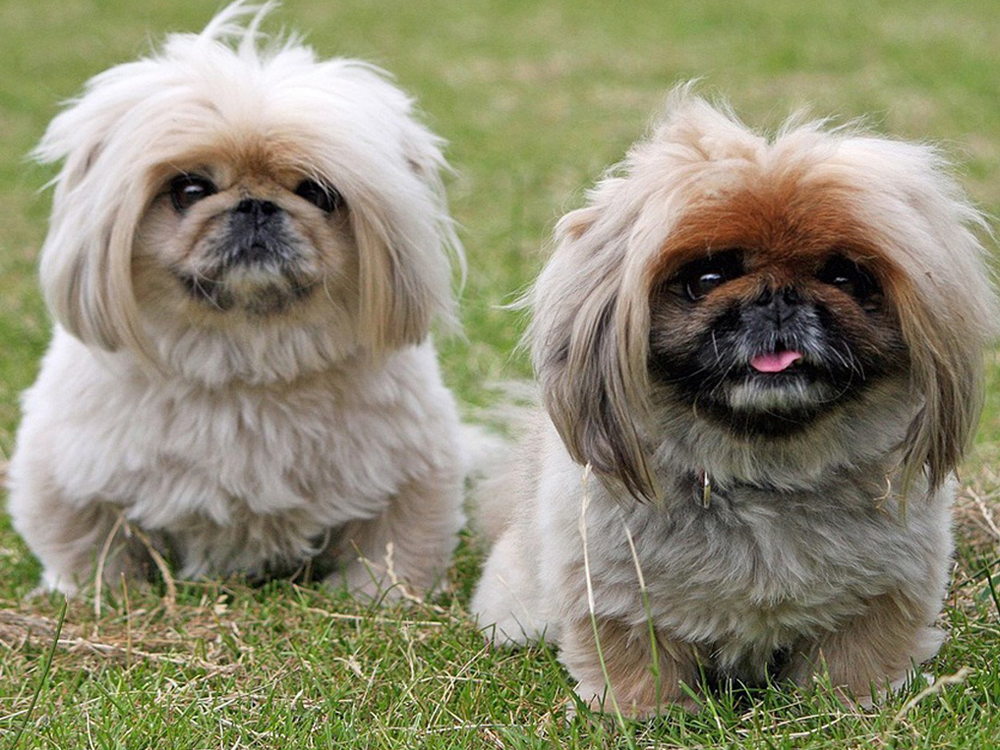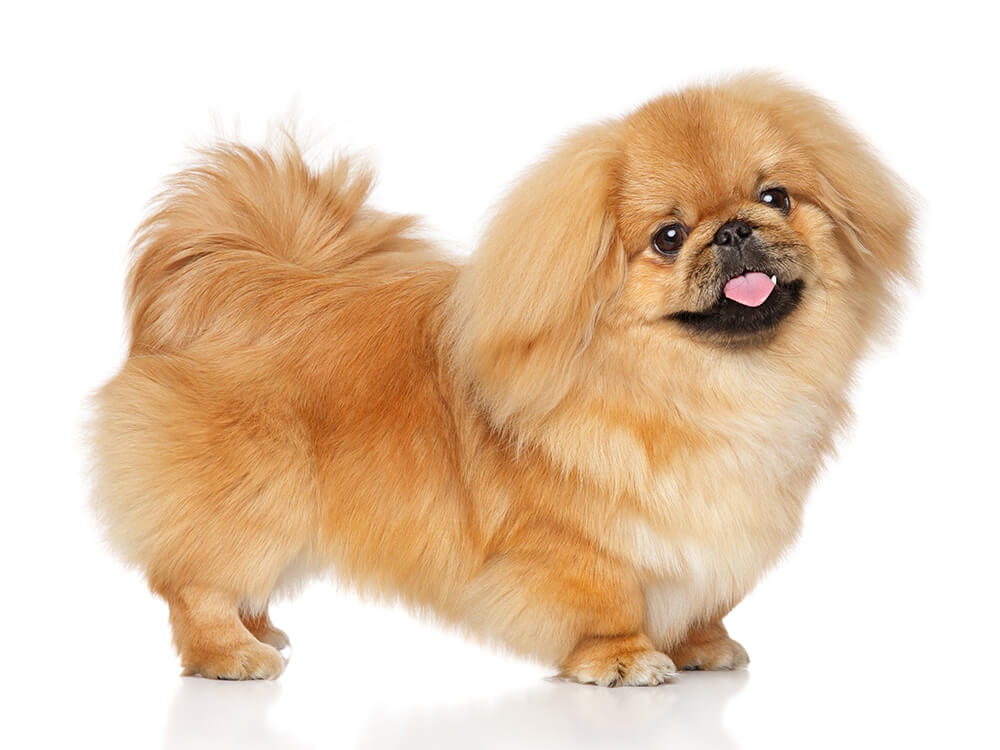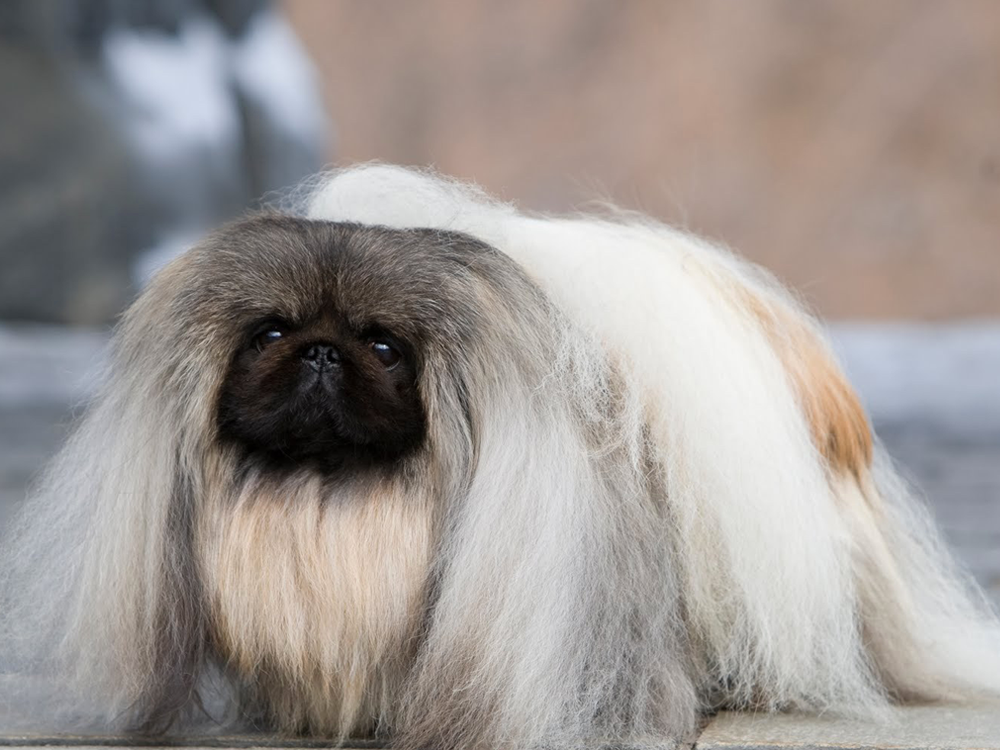
Pekingese Breed Pictures
Vital Breed Stats
| Height: | 30 - 45 cm M | 30 - 45 cm F |
| Weight: | 4 - 5 kg M | 4 - 5 kg F |
| Breed Group: | Pastoral Dog Group |
| Life Expectancy: | 13 - 15 years |
| KC Registered: | No |
Breed Characteristics
| Size: |  |
| Grooming: |  |
| Exercise Level: |  |
| Trainability: |  |
| Barking Level: |  |
| Good with Children: |  |
| Good with other pets: |  |
| Affectionate: |  |
| Protective: |  |
| Cost to Keep: |  |
Give a thumbs up if you love the Pekingese

0
More About the Breed
History
The Pekingese is an ancient dog breed originating in China over 1,000 years ago. Behind its creation is folklore about the lion and the marmoset. According to the story, the lion begged the patron saint of the animals, Ah Chu, to shrink its size to that of a pigmy while retaining its lion heart and character. The reason – to marry his lady-love the marmoset. The product of this union was the dog Fu Lin or the Lion Dog of China, referred today as the Pekingese.
Legend aside, it is true that this lion dog is an ancient dog that dates back to the Tang Dynasty in the 8th century. Pekingese dogs were bred by palace eunuchs and treated as royal members of the imperial family. In 1860, British looters plundered the royal palace and stole five Pekingese dogs to England. One of these dogs were given as a gift to Queen Victoria, thus increasing its popularity in the British society.
Decades later, owning a Pekingese dog has been tantamount to privilege and wealth. In 1893, the first Pekingese was exhibited at the Chester dog show in England, which roused the interest of English dog fanciers. Soon after, its popularity trickled over to Ireland and France in the late 1800s and early 1900s with toy dog owners smitten with the Pekingese breed.
The Pekingese was recognised and accepted by The Kennel Club in 1990. Today, the Pekingese remains one of the most favoured toy dogs both as a companion and family pet thanks to its loveable and charming nature.
Appearance
The Pekingese has a moderately long, pear-shaped figure with massive forelegs and light hind legs. True to its origins, it moves with a dignified gait much like a rolling trot. The Pekingese weighs from 7 to 14 pounds and stands about 15 to 23 centimetres at the withers, although some can be smaller. The distinct characteristic of this toy dog breed is its flat face and large eyes. Its body is stocky, despite its small size, and low to the ground.
Pekingese dogs wear their top coat thick and undercoat coarse, long and straight, almost pulled away from the body and forming tresses around the shoulders. Accepted colours consist of a wide array of combinations such as gold, red, sable, cream, black, white, black and tan, and blue, or slate grey. The muzzle, nose, eye rims and lips must always be black regardless of its coat colour.
Grooming
Temperament
Intelligence
The Pekingese is a dignified dog breed befitting its ancient imperial status, but it can be sometimes exasperating and stubborn. Despite being a toy dog breed, the Pekingese is never dainty or delicate. It is smart and independent – an excellent watchdog that is wary of strangers. With its family, however, it is very affectionate and fun-loving. Pekingese dogs are highly adaptable to any home due to its size and its genteel nature.
Pekingese dogs are challenging to train because they are smart, independent and stubborn. However, they can be done especially with someone who has firm and steady hands. They also need to be trained in recognising their place in the pack and who to look to for guidance and direction. Thus, early socialisation and training need to start early, so they grow up to be well-rounded adult dogs.
Nutrition
- Senior and less active: up to 374 calories daily
- Typical adults: up to 421 calories daily
- Physically active/working dogs: up to 468 calories daily
Feeding
Health
Exercise
Cost of Ownership
It is only logical to know if you can afford to buy a Pekingese puppy if you want to own one. People need to understand that they should not be owning a dog they can't raise until its maximum lifespan due to financial constraints. If you are keen to own a Pekingese, then be prepared to set aside a monthly budget of £50 to £80, on top of the initial purchase price of not lower than £700 to £1,100.
The monthly budget is only a rough estimate, but it pays to know an overview or a simple breakdown of the significant costs:
- Pet insurance – £23 to £50 a month.
- Food costs (excluding treats) – £20 to £30 a month.
- Veterinary care – £800 a year.
- Dog supplies/equipment – £200 (one-time purchase)
Is a Pekingese Right for You?
- The Pekingese is an ancient dog breed originating in China over 1,000 years ago
- The distinct characteristic of this toy dog breed is the combination of its flat face and large eyes.
- It is high-maintenance with coat needing daily brushing.
- It is smart and independent – a great watchdog that wary of strangers
- It is very affectionate, fun-loving and highly adaptable.






